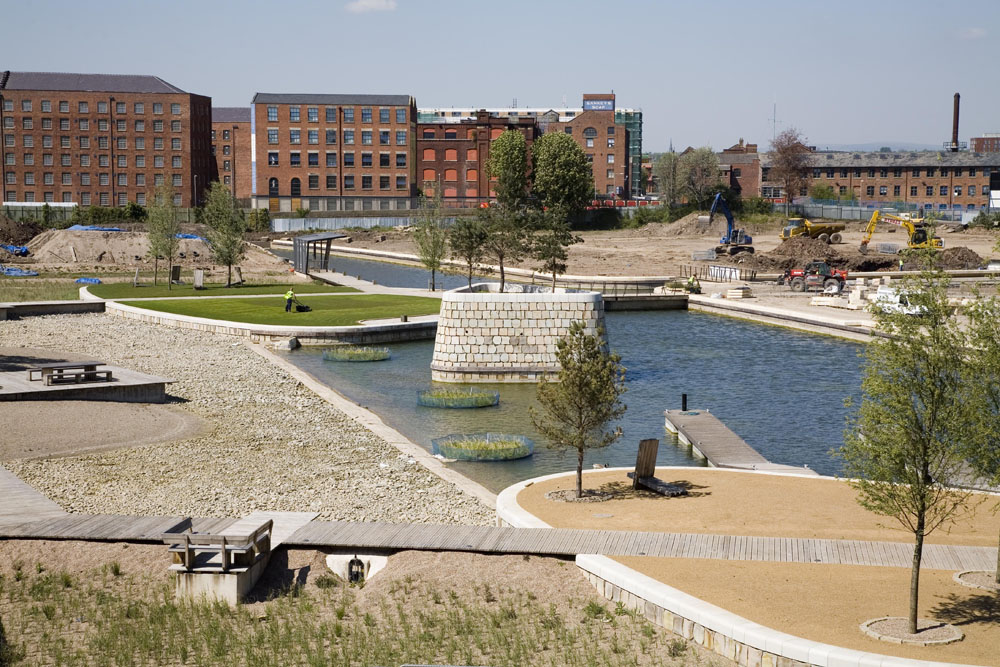Green spotlight: New Islington
The 29-acre urban regeneration scheme of New Islington in east Manchester is staking a decent claim to be one of the UK's most ecologically sound new neighbourhoods.
New Islington was the third Millennium Community to be announced by the Government and is part of a programme of exemplar 21st Century developments aimed at ensuring long-term sustainability.
Nestled between the Rochdale and Ashton Canals, the site is undergoing a radical transformation to a masterplan by architect Will Alsop. Once completed it will bring together more than 1,600 new homes – including 'affordable' housing – as well as commercial space for new shops, pubs, restaurants, cafes, bars, a new canal, a primary school, a modern primary health centre and office space.
- Cardroom estate
- New Islington waterpark
- New Islington waterpark
- New Islington waterpark
- Piercy Street
- Piercy Street
Work started on site in summer 2003 and its centrepiece, a four-acre water park, is now complete. Birds and insects are already being attracted to this green space which is surrounded by a 'living wall' made of wire mesh and native plants. Baskets installed in the water will soon be home to Britain's native white-clawed crayfish. A series of humanly inaccessible islands on the boating and fishing lake will encourage nesting birds.
David Chilton, the area director for one of the lead partners on the project, English Partnerships, says: "We think it's pretty unheard of, in the UK at least, for this kind of home for wildlife to be deliberately built so close to a busy city centre."
Increasing the biodiversity of the neighbourhood was a key component of the design brief and no small ambition as Ancoats was home to heavy industry since the start of the industrial revolution. Extensive bioremediation was necessary to clean around 100,000 tonnes of soil in situ.
The green revolution at Ancoats will not only be tackled physically but socially. In an area that had suffered the ignominy of being in the bottom 1% most deprived wards in England the new homes will be a standard bearer for energy efficiency, taking the power and heat from a mini on-site Combined Heat and Power (CHP) plant, the result will be 50% less CO2 emissions than conventional systems – and lower bills.
The recently completed, and now occupied, 14-home development on Piercy Street – which features flat grassed roofs to provide natural insulation – was also a project winner at last year's Housing Design Awards.
Sustainable development is clearly becoming an economic as well as social concern, illustrated by the Government using last December's Budget speech to announce an exemption on stamp duty land tax for new zero-carbon homes. Housing Minister Yvette Cooper more recently called on developers to put talk into practice: "We need to build more affordable homes but we also need to cut carbon emissions at the same time. That is why we are working with the industry to meet the zero-carbon challenge".
The transformation of Ancoats into New Islington is certainly far more than a cynical re-branding as a means to tackle economic deprivation, it appears to be emerging as a desirable and sustainable community – in the heart of the city.
Chilton comments: "Millennium Communities are forward-thinking communities that are kind to the planet and encourage environmentally-friendly ways of planning and building to give residents the best quality of life. It is hoped that in the not-too-distant future developments of this type are not viewed as exemplars but as the norm."










